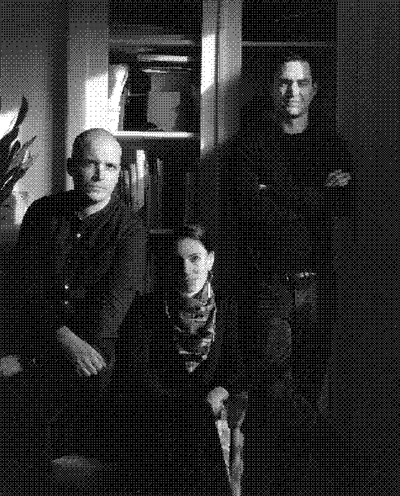Could you please introduce yourself?
Jonghwan Baek, a founder and chief director of WGNB. It was founded eight years ago and our projects range from architecture to interior design, product design, lighting design, and so on.




Jonghwan Baek
What’s your current state of mind?
I am very pleased to be here, and I’m a bit stressed about answering this interview, trying to do as best as possible.
You can’t do it wrong! What are you currently working on, you and the whole practice?
We are currently working on both architectural and spatial projects. Architecture is forming a boundary within nature, and spatial design is creating a boundary within architecture. However, we treat all the projects with a main thought: we are re-defining the boundary. Rather than a typical boarder that divides and segregates, we would like to re-design the boundary that connects and intermix to build relations between people, objects, nature, buildings and other complex entities.
Architectural projects we are currently working on includes, what we call “stay”, I guess it’s a Korean way of defining vacation venues where you can travel to and rest in foreign locations. And, other projects that are a café, a private gallery, a large commercial complex, and other fashion retail spaces as usual.
The projects are located mostly in Korea, but also in Shenzhen, China, and Chicago, USA. We’ve just heard that a furniture design studio in France would be interested in working on a collaborative project with us.


WGNB Office


WGNB Office Illustration


WGNB Office


WGNB Office


WGNB Office


WGNB Office
What got you into design and architecture?
Since middle school, I was interested in spatial design. At that time, I had only a small project to do, my room. I had been constantly changing furniture arrangement of my small room. And as I grew up I got into these fields by studying spatial design at the university, then I worked in a company and started working on projects in the office, and outside of the office,meaning on-site construction. From that point, I was slowly getting into design and architecture, and positioning element in space, product design and so on.
I also had a lot of interests in broader field of design and art, such as fashion design, car design, architecture and contemporary art.
Is there a specific time when you realized that this was going to be your career?
I first finished a spatial design project and saw it come to life, I was mesmerized. All the lines I drew became edges of the space, and all the planes I colored became walls and ceilings. At the moment, I realized this was the work I wanted to do for my life.
Was it also the same moment you felt that you should have your own practice?
It was the same moment, yes, I realised I wanted to do my own projects eventually.
What was the feeling, the intuition when WGNB was created?
It was more of an ambition than an intuition, I didn’t only want WGNB to be another Korean design company, I also wanted it to be global, I wanted the world to know about Korea through WGNB’s design.
You surely don’t hesitate in communicating your work around.You seem to also have an artistic practice, I saw your paintings on Instagram. Could you tell us more about that?
Yes, there is no time to hesitate. What we ultimately do is communicating, with the world, through the design.
Design is my occupation, and I’d say painting is my personal hobby. I paint every morning, when I arrive at the office. Doing so, there are chances this hobby turns into design opportunities, making them into a product, such as a carpet and furniture. Eventually, when I turn over 70 and retire, I’ll become an artist.
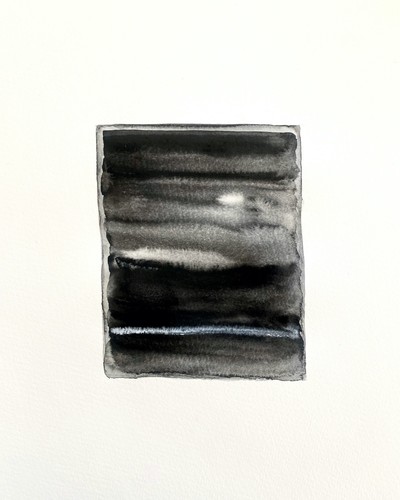

Painting by Jonghwan Baek


Painting by Jonghwan Baek


Painting by Jonghwan Baek


Painting by Jonghwan Baek


YOUANDUS × WGNB Carpet
So architecture and design are side-projects and you paint every morning?
Yes, architecture and design are just side-projects. (laugh)

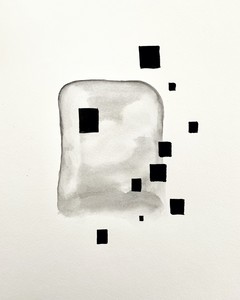
Painting by Jonghwan Baek about proportion, harmony, and balance
Is there anything you would like to change in your development?
Not really changing, but I would like to do more projects that can be understood by a broader range of people, beyond any barriers of language, nationality and regionality. Those architectural and spatial projects we are doing to be in a more global situation.


Boon Shop illustration
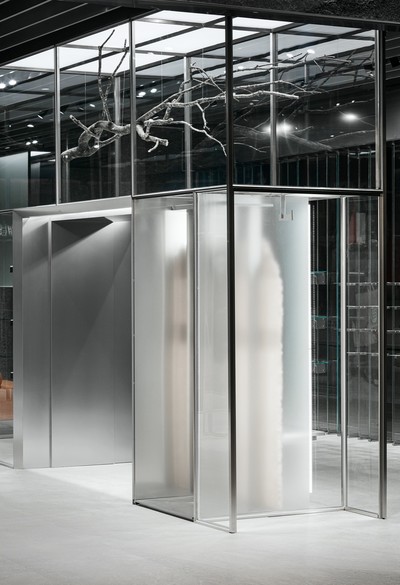

Boon Shop

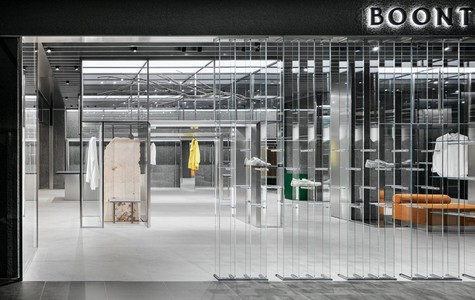
Boon Shop
Could you talk about boundaries? Is it about language, or the country and its traditions?
For sure, the linguistic communication and regional remoteness would be the most problematic aspects at the moment. WGNB is, I believe, very well known in Korea, and potentially in Asia but is hasn’t been spreading its name throughout the world yet. I guess it is because there are not many references for the global clients or clients in foreign countries to realize who we are. We are working on creating those references for them so that they can believe in what we do and what we can do for them.


Painting by Jonghwan Baek about proportion, harmony, and balance
When you were studying, what were your references?
I used to look up to those architects and designers, such as Shiro Kuramata, Alberto Campo Baeza and Peter Zumthor, but now, rather than considering architectures or designers, I am more interested in, and actually look up to those interdisciplinary artists, such as Daniel Arsham, Tom Sachs; I’d say I look more at the multi-dimensional works themselves, and furthermore, I value their thoughts and philosophy behind the visual.


ONN Brand Furniture


ONN Brand Furniture
How much time are you able to spend on design and creative activities during a normal day?
Besides the time I spend with clients discussing projects, all the time I have, I think about ideas and design, even in the bathroom or while sleeping. Which means, I have to wake up a lot of times in the middle of the night to write down or sketch those ideas. Actually, the moment when I come up with ideas are either in the bathroom, or in the bed sleeping.
So do you have a notebook next to your bed?
Yes, and in the bathroom, a notebook, and a pencil.


Sketch
You seem to want to develop a global project, worldwide obviously, but also global in terms of design, from small objects, to bigger ones, to interior design, and architecture. Was it always the case?
After working ten years at a company, when I was launching WGNB, the ultimate goal was to be a global design studio.A lot of creative masters I looked up to worked fluently and flexibly beyond any boundaries, including in Europe. Erwan and Ronan Bouroullec were one example for sure. Also, Thomas Heatherwick could be a great example. How his work ranges from massive buildings to public bus and small objects.
So, I started believing that we could also undertake designing objects placed in the spaces we designed, and even the architecture of the buildings where those spaces are.


ONN Brand Furniture

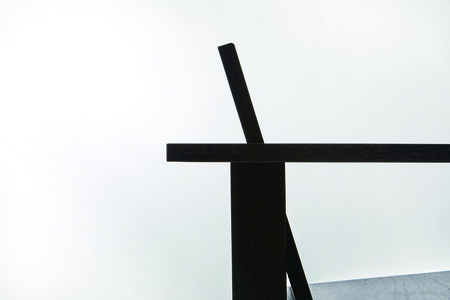
ONN Brand Furniture
We interviewed John Pawson who totally assumes his architect syndrome, the will to design everything related to a project in the end. But he was first an architect and then also practiced product design, what about you?
Yes, very similar, but somewhat in the opposite order. We started designing for smaller spaces, and only interior spaces. And we are broadening our spectrum to architecture, the shell, while also narrowing to furniture, and lighting design, what is in the shell. We are sort of radiating out our boundaries, in all directions.
How do you manage this with your team? Do you ask your people to have a global approach?
I don’t really ask WGNB team to have a global approach. I just ask them to be WGNB.
I think the architects, and designers at WGNB have joined the team with their own perspectives and definition of what is the like WGNB. So, the projects they do in WGNB become parts of the WGNB identity. And, being WGNB is indeed the right way to get global. Our personalities, nationalities, traditions and other aspects differentiate us from the rest and make us unique in the world.
How do you present your ideas, your project, do you have a method?
I know a lot of designers, architects, who have a logical thinking and focuses on reasonable ideas. We rather focus on clients’ own identities, stories. We translate these narratives into design, then allow the clients and clients’ brands to communicate with their audiences. There might be no WGNB in the color or style of the final design, but we believe that we are carried by the narratives we create. Methodologically, we use our own styled illustrations to tell the ideas we come up with. With the illustrations we don’t convey grandiose or philosophical ideas, but simple yet profound ones.
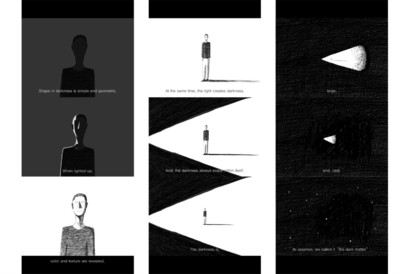

Juun.J Flagship Store, Illustration to present the concept
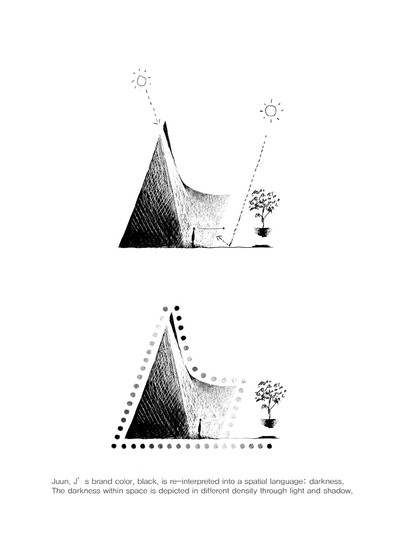

Juun. J Flagship store illustrations


Juun.J Flagship Store


Juun.J Flagship Store


Juun.J Flagship Store
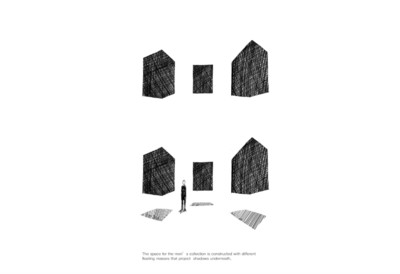

Juun.J Flagship Store illustration

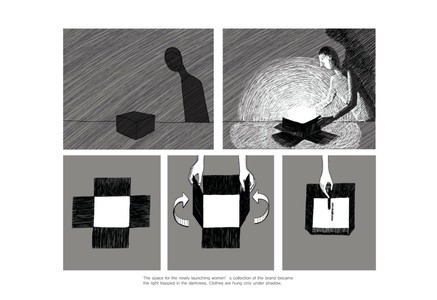
Juun.J Flagship Store illustration


Juun.J Flagship Store

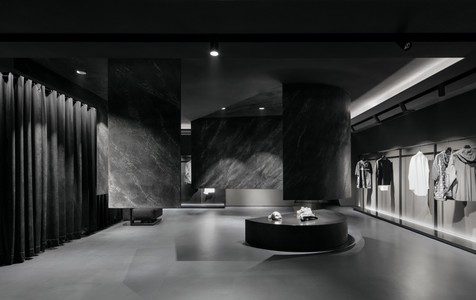
Juun.J Flagship Store
Do you have some business models in mind who inspired you in the development of WGNB?
I am very poor at business, it’s the last thing I can do well. But, I think Nike is the business model that I am the most inspired by. Nike sneakers are a sort of cultural movement. A pair of Nike sneakers costs around 100-200 US dollars, but Nike manages to re-evaluate these sneakers into something more, by collaborating with artists and by transferring into the cultural movement. Nike is expanding their products’ value through their interdiscipilinary approach, and we believe that our service as a design studio can do the same, expanding beyond visuals and aesthetics. Nike is a product brand and WGNB provides service. However, Nike has incorporated their supporters and fans into their business to create a culture beyond the product. I envision to make fans of WGNB, who supports our vision as brand.


Inspiration “This illustration of the hat may have been imagined from looking at an elephant and a boa snake first, or it may have been the other way around. It does not matter. The illustration is dope enough just by seeing the existing ideas and concept from a new perspective.” JHB
It feels you are very strategic, what do you consider essential in terms of strategy?
It’s about differentiating us from other competitive designers, it’s the reason why the clients come to us. Our style, I would say, is originated somewhere in the Korean / Asian culture, with adapting Western aesthetics. The mixture of these differentiate ourselves from competitors in Korea and the world. Also, those identities such as narratives help us.
It answers the question, partially, but now, what is your strategy to get global ? I feel that it’s well-thought, through communication, but I would like to have your perspective.
Ten years ago, it was hard for us to even imagine our company on the International market. At the time, we were reading those international design platforms online and offline, but we did not even imagine our projects on those magazines. It was something related with the Korean tradition of being modest, of not showing off too much. But when we saw that it was working out, we started to proactively send out every projects to the international press, hoping to be published. Not sure if all these were “strategic”, but it was persistence. We kept sending out our names and projects to the world.


Sketch by Jonghwan Baek
성장 means development, but also improvement and growth.
Does this communication help, is that how you get new clients?
After our first press release, the world slowly started noticing us, and there was a gradual increase in contacts, project inquiries, suggestions, and it became easier for us to communicate.
And, we did not stay still, but we pushed ourselves forward. We kept yelling out to the world who we are, and knocking at doors for potential collaboration. We are still sending out the cold-emails to those companies such as Hay, Vitra, Moooi, Kartell, and so on, promoting our designs and potential collaboration.
In this communication is there someone helping you, someone advising you? Is there anyone who is doing this job? How does it work?
Minwoo Ian Yang, here interpreting this interview, takes the main role in promoting WGNB to the world. I, myself, also work relentlessly to communicate visually via Instagram and other medias. In these attempts, we aim to let the audience know what our style and identity is, what we do and what we are pursuing for.


Papyrus Flagship Illustration


Papyrus Flagship
But how are you organized to think about that?
Along with Ian, there are some members of the team who are capable to communicate in English. Once in a while, the team gathers to think about what would be the next “content” we would like to share via our Instagram and other medias. Then, we proceed along the plan we discussed. I guess these kinds of promotion might be a bit rare as a traditional design studio. And I’m also studying English myself.
How many people are currently working at WGNB?
Seventeen.
What are the roles? Global communication? Also designing?
There are basically spatial designers, architects, an illustrator, an office manager. However, we all think about ourselves as creative directors in different types of project. Ian is also a designer, but also an oversea project manager, and an office sustainability manager. I think every member of the team, with their own personality, takes multiple roles in the office and in the WGNB projects.


Soldout Musina Showroom


Soldout Musina Showroom
How did you learn to manage all these people?
I would say that I do not have any management strategy. I just try to be friendly, someone they can easily talk to. I don’t know if you are familiar with Asian culture, especially Korean culture, in which there is a very strong age hierarchy that expects you to respect the elders, talk to them politely, at a different level of politeness. But, I want WGNB members to consider we are all friends, brothers and sisters. WGNB is actually an acronym for Wall-Ga N(&) Brothers.


WGNB Team Office
So you are adapting a horizontal style management. Is it a kind of social trend for Korean creative companies to be more horizontal?
For sure, there are a lot of companies that are noticing the efficiency of horizontal management, but it is not easy to transgress age hierarchy, since there are elder designers. The younger generation though are starting their own business, they start to adapt to this more horizontal social phenomenon.
Do you feel creative industries are leading in this matter?
It’s true that creative industries are leading this trend, being horizontal, because creativity is not about age hierarchy, it’s not because you are an elder designer that you have better ideas, and with the classic vertical hierarchy it’s not easy to communicate. The horizontal one makes it easier, more efficient, that’s probably why creative occupations function more like that.
You mentioned earlier that when you turn 70, you would retire and only paint, do you sometimes think about business transmission?
Yes, I am considering business transmission, I wouldn’t like WGNB to disappear.
So, what are you thinking when you’re considering transmission?
Personality, of virtue. Capacity. And vision.


Sketch by Jonghwan Baek
How would you describe the global design/architecture market?
I have been noticing that there are more projects merging architecture and space with nature, people, machinery, art, design, and so on. By this multidisciplinary approach, the resulting architecture or space become something beyond, something new. I think this is a great change that the boundaries are removed.
Are there any evolutions that you are more sceptical about?
I would say it is the digitalization, we are meeting through zoom, electronically, and all these features are available to everyone. And this digitalization emphasizes self-centeredness, so I am not sure about that aspect of digitalization.


Jonghwan Baek’s desk
The lack of physicality and exchange?
Yes, lack of tactile and sensibility we share with each other. And, the concept of community is disappearing.
Are there potential developments that you sometimes think about? For example, editing your own objects, publishing, developing media, do you have those kind of ideas?
We are currently preparing a solo exhibition. In our pursuit of something new, we wanted to test out what is new to us, to designers, to WGNB. Every member of WGNB will participate in the exhibition as a group, and as individuals to present their own definition of WGNB. We believe that this exhibition is the ground-zero for WGNB as we recently announced Phase WGNB 2.0, as we would proceed further than mere spatial designers.


Painting by Jonghwan Baek about proportion, harmony, and balance
If you had to do another job at another moment in time, what would you be doing and when would you have liked to live ?
At the time when aircrafts were not yet fully developed and usual, I would like to be a pilot, because I am doing what I am doing now in mostly Seoul, but I’ve always dreamed of travelling the world, between the countries, without any limitation. And that leads us to the book that is an ultimate inspiration for me, Le petit prince.
I read it over a hundred times and gathered different editions of it in different languages.
Is there an artist or a person who helps you in developing yourself?
Not directly helping, but the references I mentioned earlier, the artists and designers that I looked up to. Shiro Kuramata, architects from the Bauhaus movement, etc.
Which advice would you give to the emerging generation?
Never give up pursuing a creative path, differentiating yourself, deciding your own strategy, how you communicate, you are your own weapon to fight against competitors. One of the best characteristics I have is endurance; persistence is the key-point of my survival.


